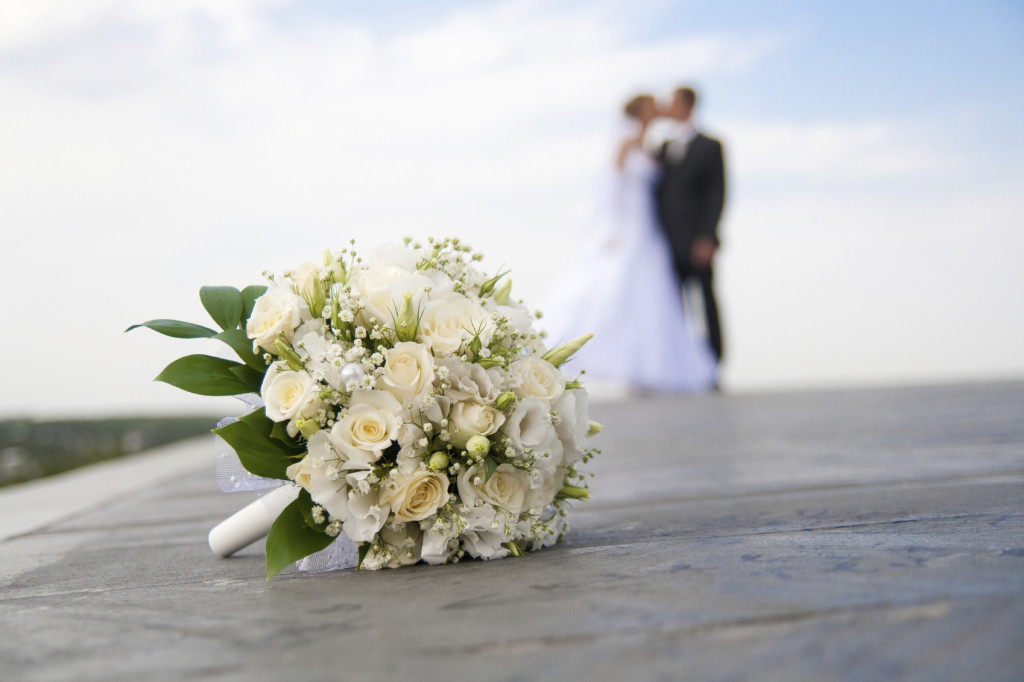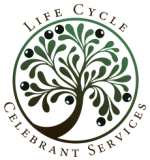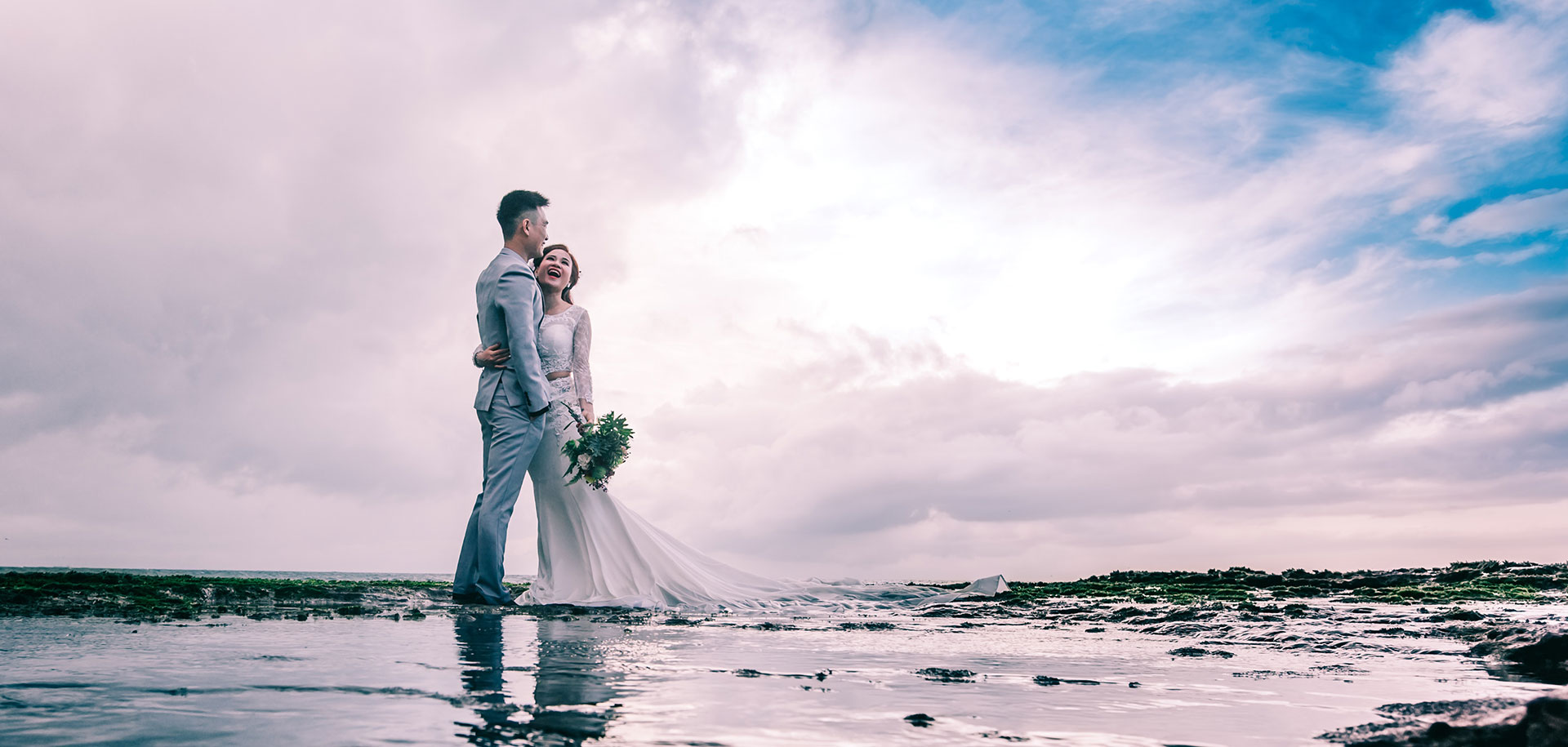Wedding Ceremonies

We know that from a little girl, many women dream of their wedding day. They have a clear picture in their mind of their wedding dress and those of their bridesmaids. They have thought through every detail of their day and how it will unfold from their dress, their makeup, the music they would have at their wedding, the vows they will recite during their wedding ceremony, the reception right through to their honeymoon.
“I Listen. I Understand. I Care. I Deliver.”

When a woman is planning her wedding day many of the thoughts and dreams from her younger days come to the forefront of her mind and she wants her dream wedding to happen. I can’t supply the knight in shining armour or her Joan of Arc (after all, it is the 21st Century!), but I am here to help you plan your wedding ceremony so that it encompasses everything you desire. You can rest assured that:
- I will listen to you.
- I understand what you want.
- I care about your day.
- I will deliver to you the wedding ceremony of your dreams
Legal Requirements
To be eligible to marry in Australia you must be over the age of 18, not already lawfully married or in a prohibited relationship.
Over the years, Australia has developed a very liberal approach to the legal wording of marriage ceremonies. As such, they can be tailored to meet personal requests and desires. There are a number of choices available as far as the wording, inclusions, venue and time for the marriage to take place. Because of this, many couples arrange for their wedding ceremony to take place here and then spend their honeymoon time together discovering the wonders of this great land.
If you are applying to stay in Australia, after your marriage there may be legal requirements that need to be met before the marriage ceremony can take place. see Legal Implications for Foreigners Marrying in Australia below.
Notice of Intended Marriage (NOIM)
Section 42 of the Marriage Act 1961 (Cth) requires the parties to an intended marriage to give the authorised celebrant at least one month’s written notice prior to the solemnisation of the marriage. This notice is known as the Notice of Intended Marriage (NOIM). The NOIM is valid for eighteen months.
There are FOUR pages to the NOIM, including details on how to complete it. It is important that you read and follow the instructions carefully. You can download a copy of the NOIM by clicking on the attached link. This link is interactive so you can complete the form and print it off before your initial appointment with Life Cycle Celebrant Services.
Proof Of Identity.
If you were born in Australia, this is the only document accepted. If you have lost your birth certificate, you can apply for a new one to be issued from the Registry of Births Deaths & Marriages in the State where you were born.
Residents born overseas:
1. If you were born overseas and your birth certificate is not available, you can use your non-Australian passport. You can still use your foreign passport if it has expired, provided it was not cancelled.
2. If you do not have an overseas passport and your birth certificate has been lost or destroyed and you cannot obtain a new one, you may complete a Statutory Declaration stating your birth details. I can assist you with that.
Divorce or Death Certificate:
If a previous marriage ended in divorce or death the Divorce or Death Certificate must be produced.
NB: All documents in a foreign language must be translated into English by an approved translator. You can find a translator here http://www.naati.com.au/home_page.html
Age Requirements:
As stated earlier, to be eligible to marry in Australia you must be over the age of 18. If one of the parties to the marriage is under the age of 18, both a Court Order and parents’ consent are required. Under no circumstances may two people under the age of 18 marry each other.
Witnesses:
Two people over the age of 18 are required to witness your marriage and sign the Marriage Register and Certificates.
The Ceremony:
While there are many optional components that you can choose to include in your wedding ceremony there are a few things that are not. Your celebrant must introduce him/herself and he or she must include the following:
The Monitum:
At the beginning of the wedding ceremony, the celebrant is required to make the following statement to the couple, their witnesses and their guests regarding the legal requirements of marriage in Australia.
“My name is [Celebrants FULL NAME] and we are gathered today to witness the marriage of A & B. I am duly authorised by law to solemnise marriages according to law.
Before you are joined in marriage in my presence and in the presence of these witnesses, I am to remind you of the solemn and binding nature of the relationship into which you are now about to enter.
Marriage, according to law in Australia, is the union of two people to the exclusion of all others, voluntarily entered into for life.”
Legal Vows
Both the Monitum and the Legal Vows are required be spoken at your ceremony otherwise your marriage will not be valid. You may lengthen the legal vows to include personal promises that you wish to make to each you must each say the following or you can say your personal vows separately:
Partner A must say to Partner B (and vice versa):
“I call upon the persons here present to witness that I, [Full Legal Name], take you, [Full Legal Name] to be my lawful wedded wife/husband/spouse.” (or words to that effect)
To put this into context, find the Order of Ceremony below. This can be changed and personalised according to the couples wishes etc but must include the Monitum and Legal Vows/ full names.
N.B You may leave out either “lawful” or “wedded” but not both; you must use one of these words.
As a guide, the wedding ceremony usually follows a format similar to this:
Pre-Welcome and organising guests
Entry of bridal party/ brides or grooms
Giving away
Welcome by celebrant
Introduction/ Couples Story
Readings/ poems (if applicable)
Monitum/ Legals
Declaration of intention to marry (legal vows including full names)
Personal vows
Ring Exchange
Other Optional Ceremony (e.g. Candle Ceremony, Sand Ceremony)
Declaration/Pronouncement of marriage
Wedding Kiss
Signing of the register
Announcement that the couple are now legally married
Conclusion and couple join their guests
Legal Implications for Foreigners Marrying in Australia:
Australian residents can bring a partner to Australia on a Fiancé or Prospective Spouse Visa.
You are required to lodge a NOIM with an Authorised Marriage Celebrant within the minimum period of one month of your nominated date of marriage. This date of your wedding can be changed if the visa is not granted in time.
The Celebrant can issue you with a letter addressed to the appropriate Australian Embassy handling the applicant’s case, confirming that he/she has received that Notice, the date and location of the proposed marriage. Your partner can then lodge this letter with their application at the embassy in the country from which they are applying.
IMPORTANT ADVICE ABOUT MIGRATION
Marriage and Immigration
Australia’s immigration laws offer visas to foreigners who are in relationships with Australians. However, the requirements are extremely complex and for that reason I cannot offer you any advice on this matter. It is imperative that you seek legal advice about your personal circumstances as only an experienced immigration solicitor or agent would be qualified to answer any questions or concerns you may have regarding an applicant’s immigration status following a marriage to an Australian citizen.
You can access useful advice and information by contacting the Department of Immigration and Citizenship and the Office of the Migration Agents Registration Authority (MARA). These websites will help you in obtaining the correct information and visas for those holding overseas passports and wanting to marry in Australia.
The Department of Immigration’s website is very helpful and should be your first point of contact. Department of Immigration
There is a booklet which gives you a lot of information about partner migration Partner Migration booklet
If you need find an Australian Embassy in your country, go to: Department of Foreign Affairs and Trade
If your documents are in a language other than English, you will need to have them translated by a registered translator. You can find a registered translator by contacting the National Accreditation Authority for Translators. Tel. 1300 557 470, email: info@naati.com.au or visit the website at http://www.naati.com.au



